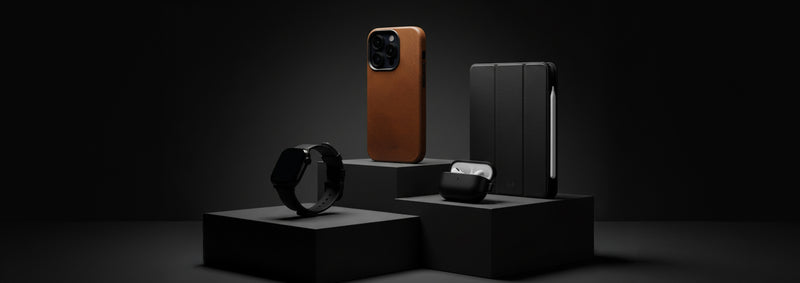When it comes to leather, discerning real from faux can be a sophisticated skill, one that ensures you’re getting the quality and longevity you deserve. At Tôle, we pride ourselves on using only the finest genuine leather, and we want you to be able to recognize it too. Here’s your definitive guide to identifying real leather, so you can always invest in the best.
The Sensory Experience: Smell and Touch

One of the simplest and most effective ways to identify genuine leather is by its smell. Real leather has a distinctive, rich, and earthy aroma that is unmistakable. This natural scent is due to the tanning process, which genuine leather undergoes. In contrast, faux leather or synthetic materials often smell like chemicals or plastic. So, trust your nose – if it doesn’t have that authentic leather scent, it probably isn’t real.
Authentic leather also feels luxurious to the touch. It should be soft, supple, and warm. When you press on genuine leather, it will stretch and wrinkle slightly, similar to human skin, and then return to its original shape. This is due to the natural elasticity of real leather. Faux leather, on the other hand, often feels cold, stiff, and unnaturally smooth. It lacks the natural grain and texture variations found in real leather. Run your fingers across the surface – if it feels too uniform and plastic-like, it’s likely not genuine.
Visual and Absorption Tests

Genuine leather is beautifully imperfect. Each piece of real leather is unique, with its own set of natural marks, wrinkles, and grain patterns. These imperfections add to its character and charm. In contrast, synthetic leather often looks too perfect, with a consistent, artificial grain pattern. Inspect the surface closely under good lighting. Real leather will have a rich, varied texture, whereas faux leather will appear uniform and sometimes even glossy.
A simple water test can help determine if your leather is real. Place a small drop of water on the surface of the leather. Genuine leather will absorb the moisture slowly, darkening slightly as it does. This is because real leather is porous and breathable. Faux leather, made from synthetic materials, will not absorb the water. Instead, the water will bead up on the surface or run off. This test is a quick and easy way to check for authenticity without causing any damage.
Edges and Cautionary Measures

Look closely at the edges of the leather product. Genuine leather, being a natural material, will have rough, fibrous edges. These fibers are part of the animal hide. In contrast, synthetic leather typically has smooth, clean-cut edges that look too perfect. By examining the edges, you can often tell if the material is real leather or an imitation.
For those who want a definitive test and are willing to sacrifice a tiny piece of leather (such as a small, hidden corner), the burn test is highly effective. Real leather will char and smell like burnt hair when exposed to a flame, due to its organic origins. Faux leather, on the other hand, will melt and smell like burnt plastic. This test should be performed with caution and only as a last resort.
Conclusion: Trust in Tôle's Authenticity

Understanding the nuances between real and faux leather can make a significant difference in your purchasing decisions. At Tôle, we are committed to providing only the finest genuine leather products, ensuring that each piece is a testament to quality and craftsmanship. By using these simple tests, you can confidently identify authentic leather, ensuring that your investment is both luxurious and enduring.
Remember, true luxury is timeless, and authentic leather, with its unique character and durability, is a perfect embodiment of this principle. When you choose Tôle, you’re not just choosing a product; you’re choosing a legacy of quality, sophistication, and elegance.


